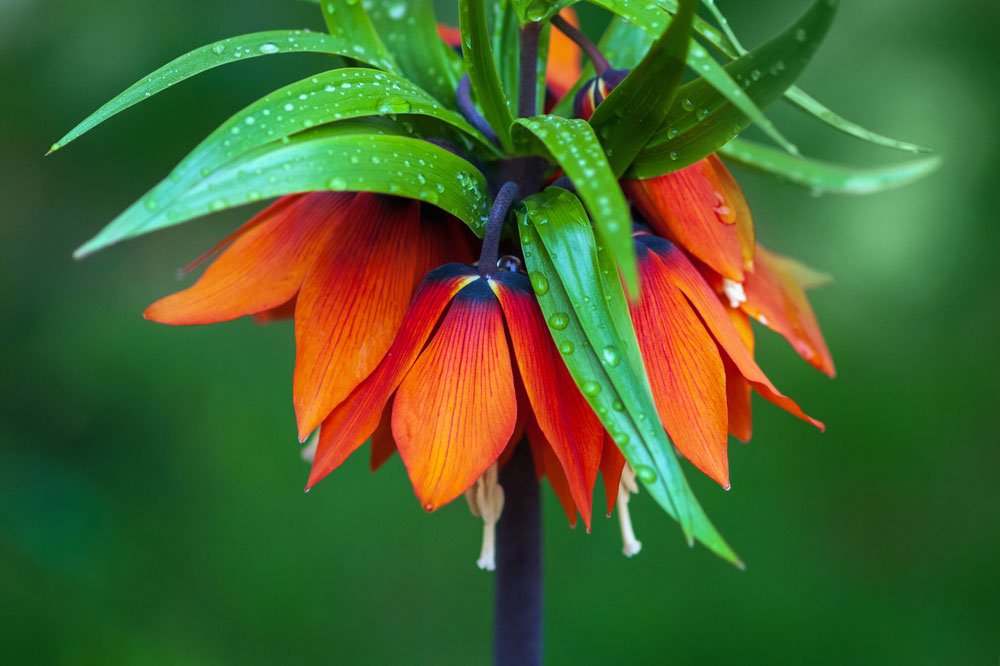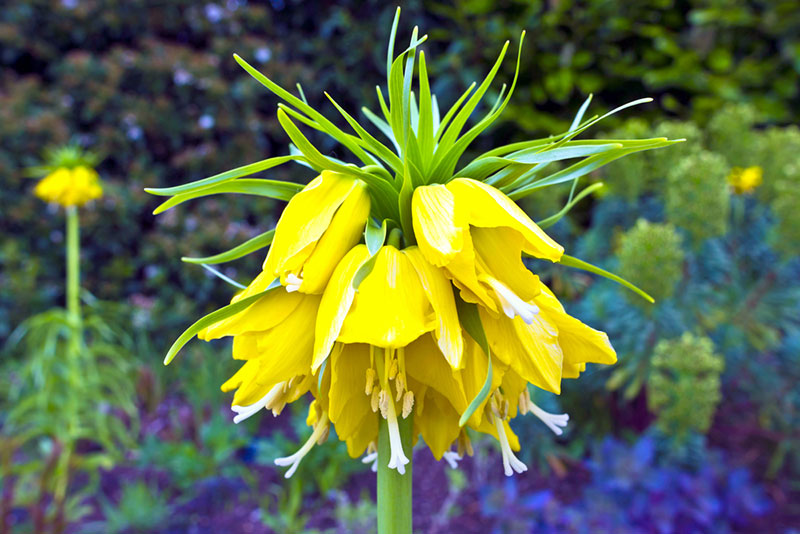
Fritillaria consists of over 100 different species, and it will grow mainly in the northern hemisphere.
Each one of these types of fritillaria has bell-shaped blooms that vary in size and color. Most variations are deer-resistant and can be found in North American hardiness zones four through 10.
I love the unique frilly top that will be above the blooms. They resemble the top of a pineapple, and they will add some height to your garden.
In this guide, we are going to take a look at 10 different types of fritillaria to see help you find a variation that fits your gardening needs.
1) Fritillaria acmopetala (Pointed-Petal Fritillary)
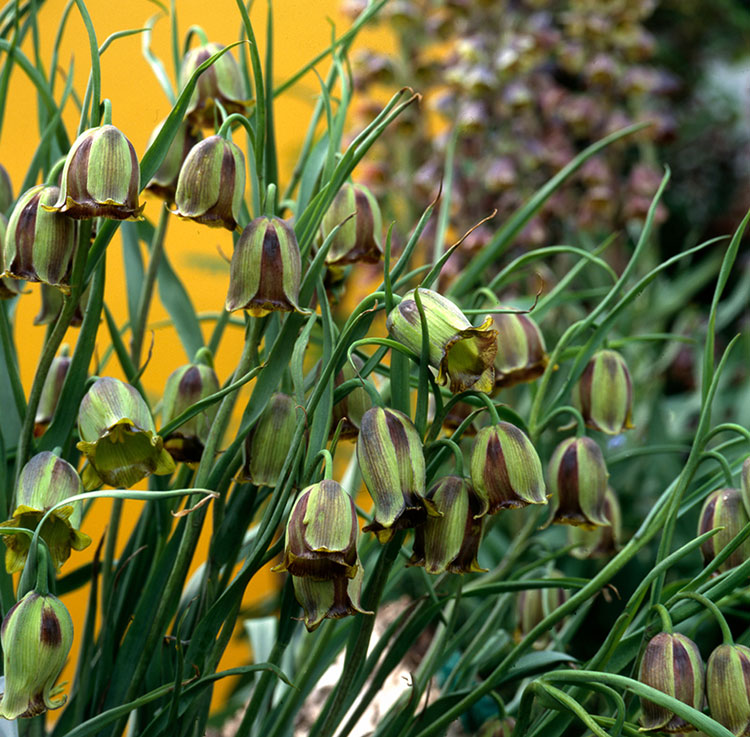
This variation is one that is native to Cyprus. It has pale green, bulb-shaped blooms that appear in mid-spring. It can grow to be a foot tall, and it will grow in part shade to full sun. The pointed-petal fritillary is very low maintenance, which means that it will grow in acidic or alkaline soil.
2) Fritillaria camschatcensis (Chocolate Lily)
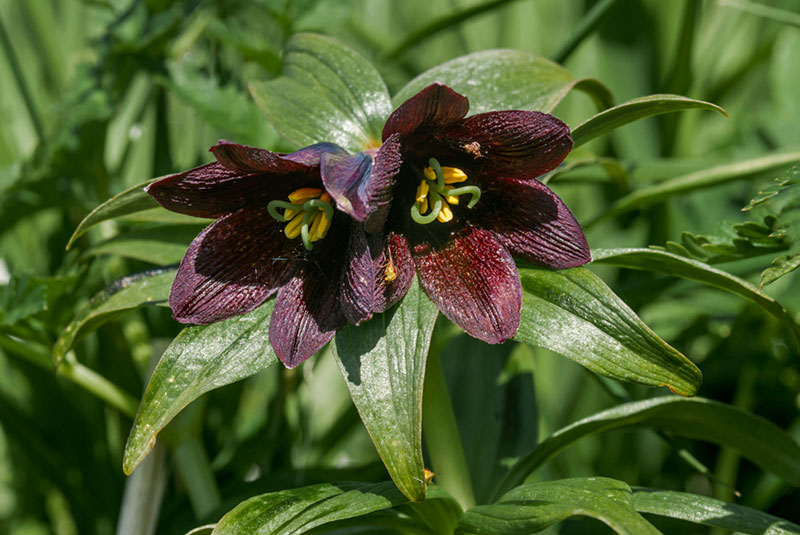
The chocolate lily has large blooms that are very attractive to look at. They are deep purple in color, which gives them an almost chocolate look, and they tend to have a yellow streak down the petals. Growing to be 2 feet tall, it prefers shaded soil that is slightly damp.
3) Fritillaria imperialis ‘Aurora’ (Crown Imperial)
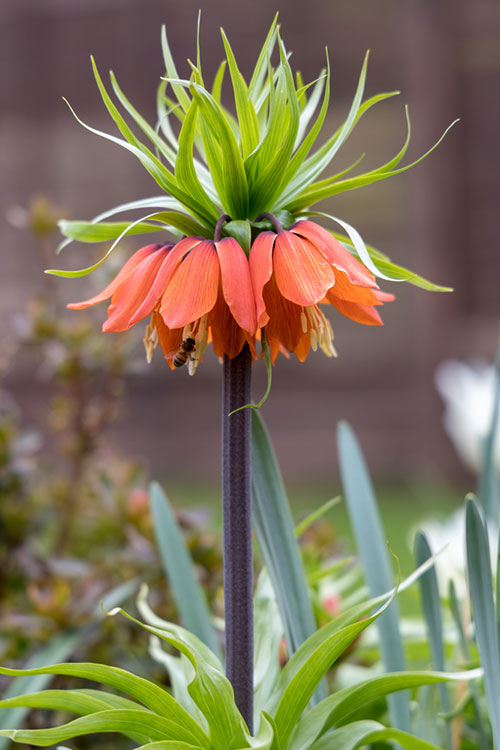
The blooms that this plant produces are bright orange, and they tend to have a rustic brown bottom that looks almost burnt. These plants can grow to be up to 3 feet tall, and they need partial to full sun and sandy soil to reach a mature height.
4) Fritillaria imperialis ‘Maxima Lutea’ (Crown Imperial)

The yellow, bulb-shaped blooms of this plant are sure to brighten up your garden. It will bloom from mid to late spring, and it will do well in soil that drains well and partial sun. I have found that this plant has a musk-like smell that comes from the blooms, and it can grow to have a height of 4 feet.
5) Fritillaria imperialis ‘Rubra Maxima’ (Crown Imperial)
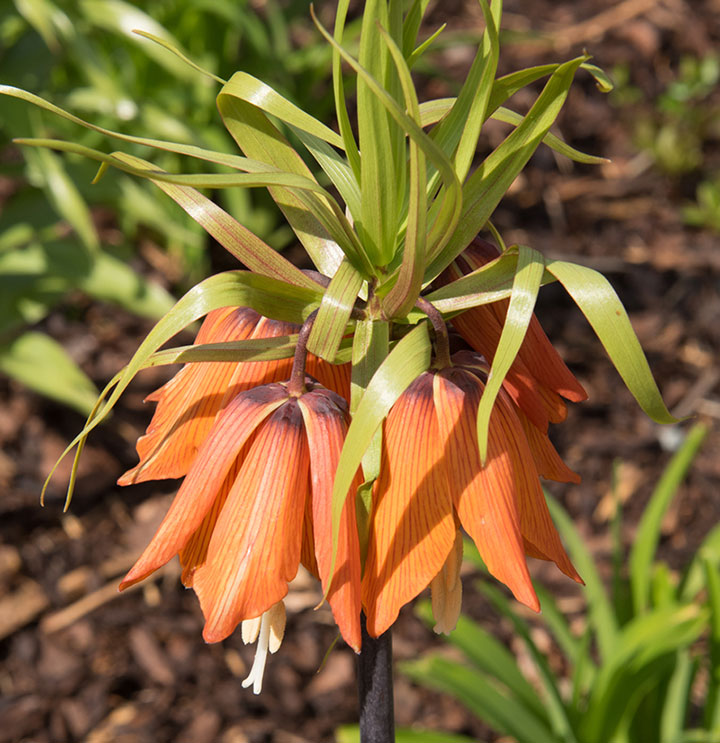
If you are looking for a plant that has striking orange-red blooms, then this is an option to consider. Blooms appear during mid to late spring, and they last for a few weeks. These fragrant plants make great borders for a garden, especially if you are looking to add some height to the space.
6) Fritillaria meleagris (Checkered Lily)
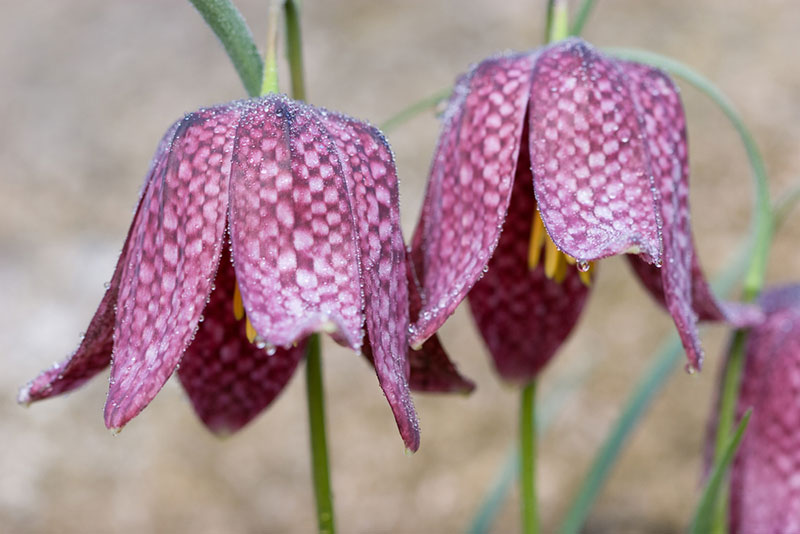
The checkered lily is a unique plant with checkered flowers that bloom in the spring. It will grow in a moist location, but sandy soil is preferred. It needs average water and part to full sun as well. This plant will only grow to be about a foot or 2 in height.
7) Fritillaria persica ‘Ivory Bells’ (Persian Lily)
The ivory bells of this variety are white with a green tint that makes them look stunning. As they mature, the blooms get more of a creamy color. This plant prefers full sun to grow, but other than that, it does not require a lot to maintain. It will grow in any type of soil, and it does not require a lot of excess water to thrive.
8) Fritillaria persica (Persian Lily)
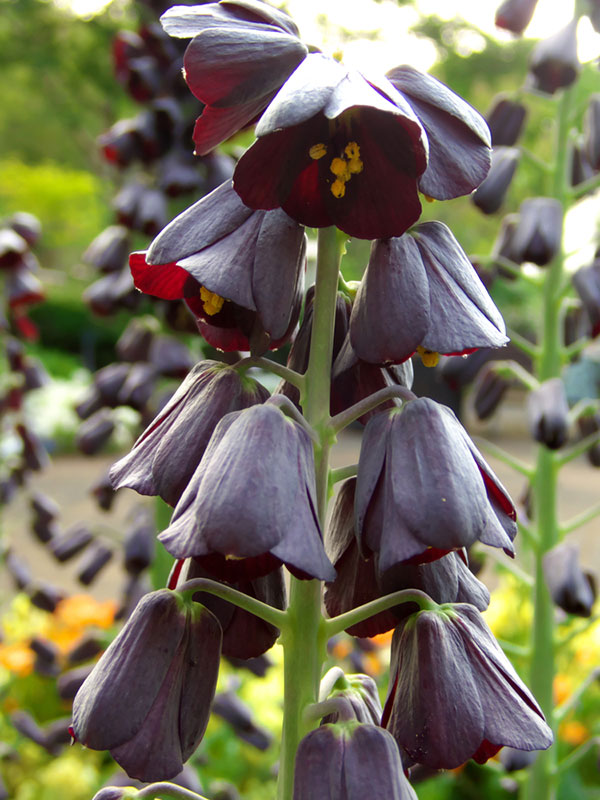
This plant is a stalked plant that gets well over 30 pendant blooms in the spring of the year. Flowers can range from a deep purple to a soft white cream. They do well in soil that drains easily and full sun. With proper care, this plant can grow to be up to 4 feet in height.
9) Fritillaria thunbergii (Thunberg Fritillary)
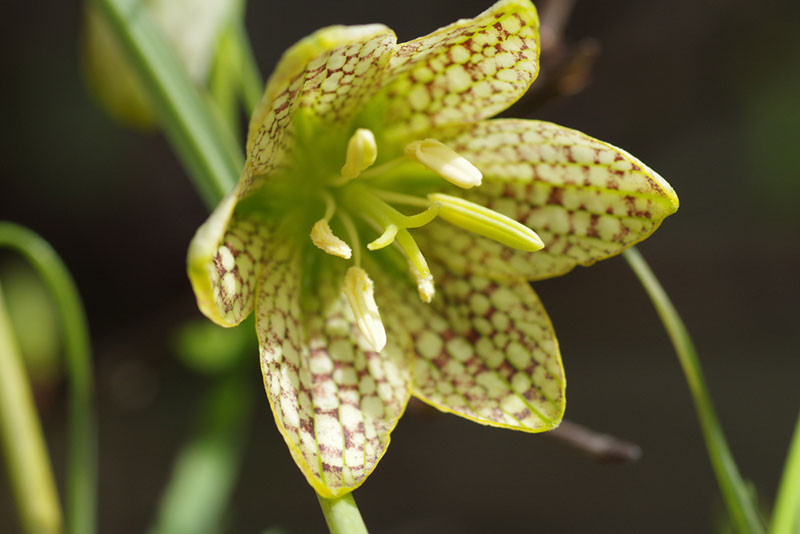
This variation originates in Japan and some parts of China. Its blooms are green in color with a square pattern that is dark purple in color. It can grow in part or full sun, with average water, and any type of soil. In most situations, this plant will grow to a height of 2 feet.
10) Fritillaria verticillata
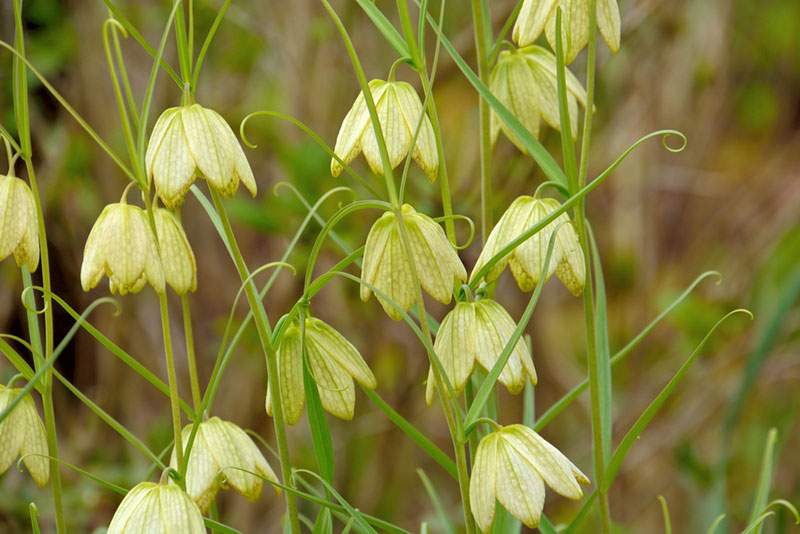
Native to central Asia, this is a plant that has unique green flowers that bloom in the spring. They only grow in hardiness zones six to eight, and they require very little care in this area. Sandy soil that drains pretty well and partial sun is best for this plant.





